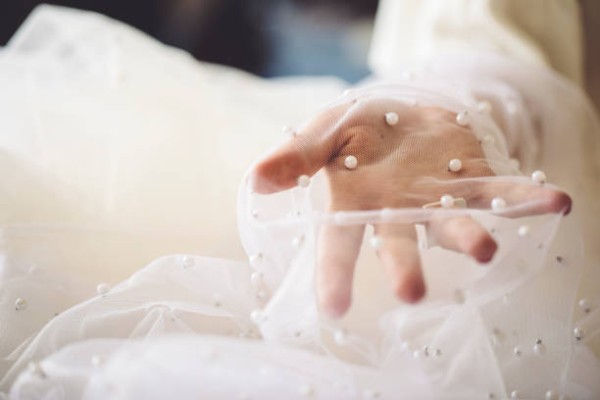
Introduction: Turning Dreams Into Wearable Art
Designing custom jewellery is a personal journey one where your thoughts, emotions, and style come together to form a tangible keepsake. But turning that abstract vision into a finished masterpiece requires more than just artistic flair; it requires clear communication between you and your custom jewelry designer.
Whether you’re looking for a statement piece, engagement ring, or family heirloom, understanding how to express your ideas ensures a smoother process, fewer revisions, and a result that exceeds expectations.
Start with a Mood Board or Inspiration
Before meeting your designer, gather visuals that reflect your style:
- Pinterest boards
- Instagram saves
- Screenshots from movies or magazines
- Photos of heirloom jewellery you admire
- Doodles or notes from your own mind
A well-curated mood board helps the designer understand your preferences, be it vintage, minimalist, baroque, or avant-garde. Even if you don’t know the terminology, your visuals speak volumes.
Be Honest About Your Budget and Materials
One of the most common missteps in bespoke jewellery is not aligning expectations with budget. Be upfront about:
- Your overall budget
- Preferences for gold (yellow, white, rose), platinum, or mixed metals
- Interest in lab-grown vs. natural diamonds
- Colour or clarity priorities in gemstones
A custom design consultation becomes much more effective when the designer understands your financial comfort zone and material expectations early on.
Describe the Story Behind the Piece
Custom jewellery is rarely just about aesthetics. There’s almost always a reason a proposal, a family tribute, a cultural symbol, or a personal milestone.
Share the story behind your piece. Do you want:
- A stone passed down from a loved one reused?
- Engraving with a secret message?
- Symbols for your children, parents, or faith?
This emotional context allows your jewellery designer to build a more meaningful and symbolic design that resonates deeply.
Clarify the Functional Needs
Do you want a ring you’ll wear every day or only on formal occasions? Is the necklace meant to layer with others or stand alone?
Discuss:
- Durability needs
- Daily wear vs. occasional use
- Stone security
- Chain length or ring thickness
- Whether the piece will stack or pair with others
Being specific about wearability will help ensure a balance between form and function.
Understand the Design Process: Sketch to CAD
Most custom jewelry designers will start with a sketch or concept art. Once approved, they create a CAD rendering (Computer Aided Design), which gives a 3D preview of your piece.
Ask for:
- How many revisions are allowed at each stage
- Whether you’ll receive a wax model
- Approximate production timeline
- Opportunities for mid-process feedback
Knowing what happens from sketch to casting avoids surprises and fosters a collaborative environment.
Don’t Be Afraid to Say What You Don’t Like
Good communication isn’t just about what you want it’s also about what you don’t want. If you dislike chunky designs, ornate filigree, or a particular gemstone cut, say so.
The best relationships between clients and designers are rooted in transparency. Your custom jewelry designer needs your feedback to align perfectly with your expectations.
Ask Questions and Take Notes
Never hesitate to ask:
- “What setting will best secure the stone?”
- “What will this piece weigh?”
- “Can you engrave initials or dates?”
- “Will this design work with my existing jewellery?”
The more informed you are, the more confident you’ll feel throughout the process. If you forget technical terms, just describe how something looks or feels your designer can translate that into design language.
Respect the Designer’s Expertise
While your vision drives the design, the craftsman’s skill brings it to life. A balance between your imagination and their technical expertise is the secret to creating something truly special.
Trust your designer’s suggestions on:
- Structural integrity
- Gem placement
- Wearability and comfort
- Design feasibility
Remember, they’re not just artists they’re engineers of elegance.
Keep a Paper Trail or Digital Record
Email summaries, WhatsApp chats, annotated sketches keeping all communication in one place ensures there’s no misinterpretation. It also serves as a reference point for both you and the jeweller throughout the design process.
Celebrate the Collaborative Nature of Custom Design
At the heart of every custom piece is a collaborative process. You’re not simply buying jewellery you’re co-creating a piece of wearable emotion.
The more engaged and communicative you are, the more successful (and memorable) your design journey will be.
FAQs
Q1. What if I don’t know much about jewellery design?
That’s perfectly okay. Your designer can walk you through options based on the visuals and emotions you provide.
Q2. Can I change the design after CAD is made?
Yes, most jewellers allow limited revisions during the CAD stage. Ask beforehand about any extra charges or limitations.
Q3. Will the final piece look exactly like the sketch or CAD model?
Yes, modern CAD design and wax modelling allow for high accuracy. Minor variations may occur due to hand-finishing, but they usually enhance the uniqueness.
Q4. What happens if I change my mind halfway through?
Discuss this during your consultation. Some changes are manageable early in the process, while others after casting may incur additional costs.
Q5. Is it okay to ask for symbolic elements like initials or birthstones?
Absolutely! These are what make custom pieces special. Any reputable designer will welcome such requests.

